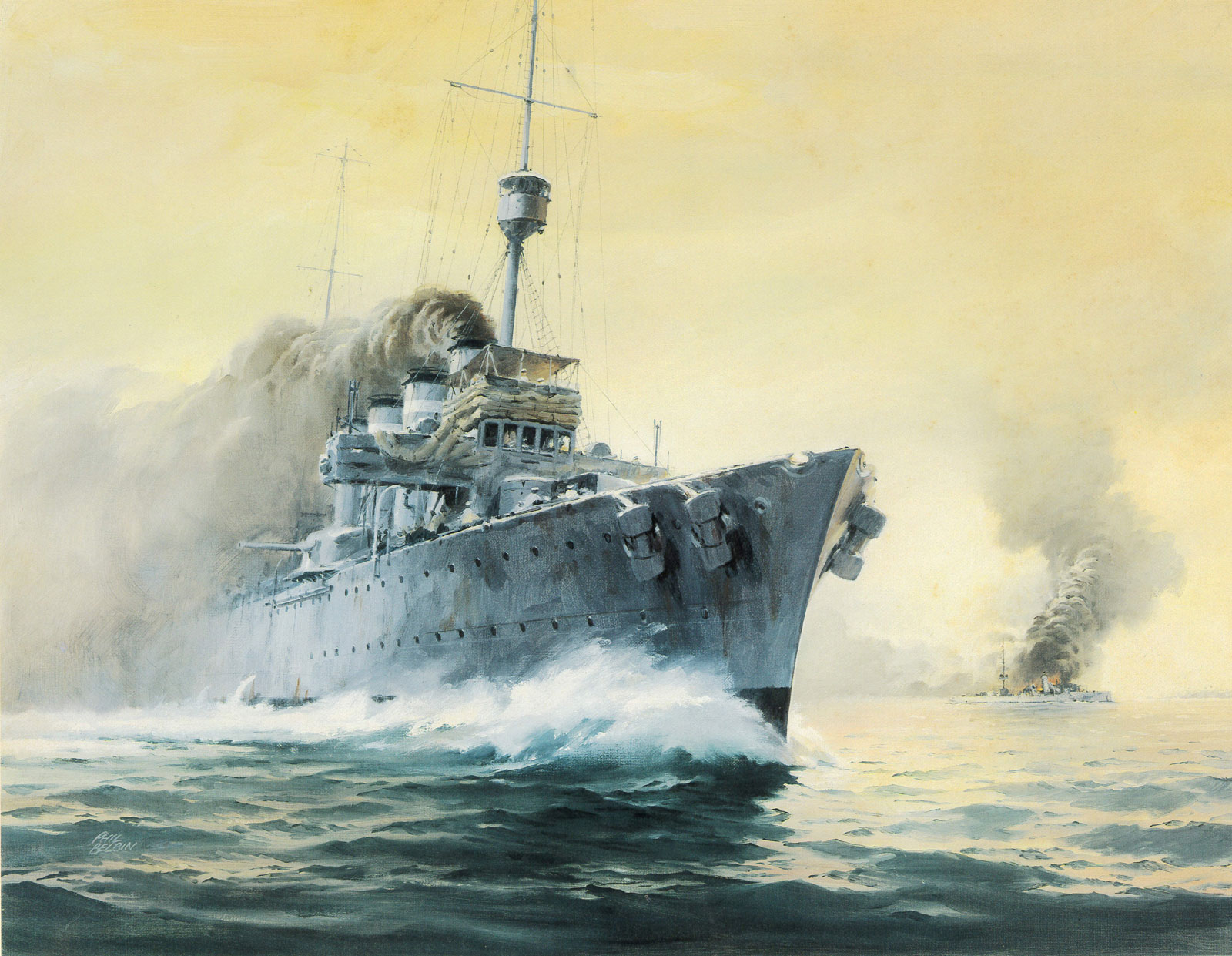HMAS Sydney in its fight with a Zeppelin in the North Sea
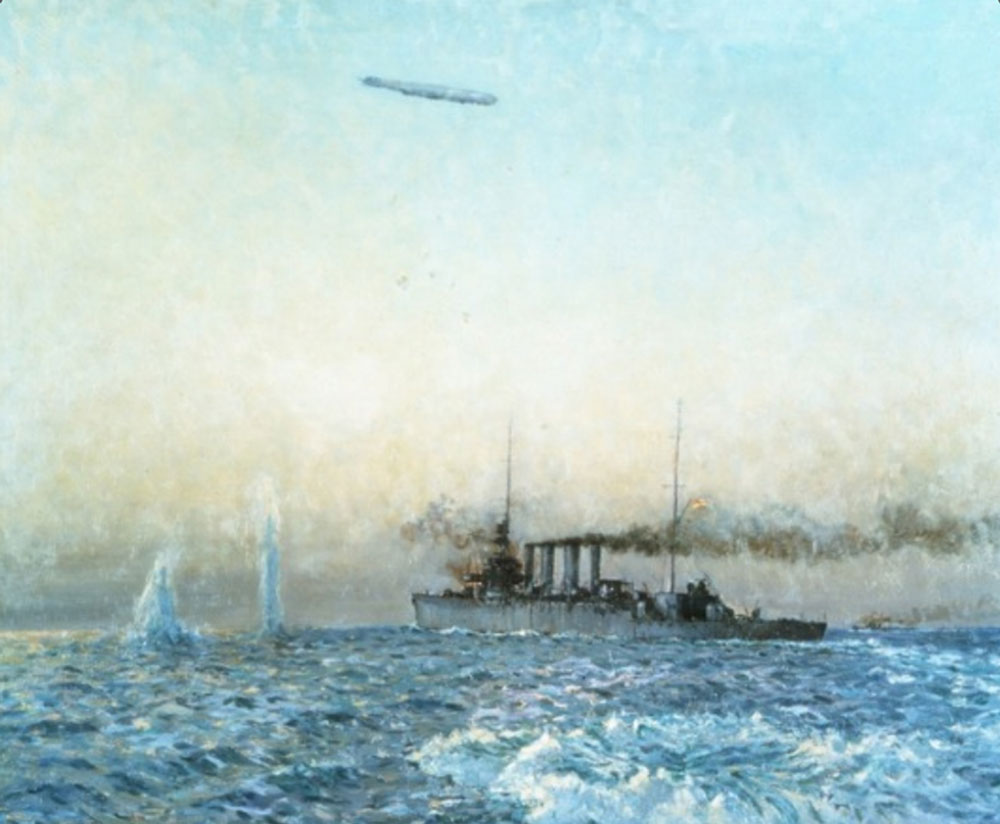
A confusing sea and air battle took place on May 4, 1917. The Australian cruiser Sydney, in concert with the British cruiser Dublin and four destroyers, engaged a German Zeppelin flying near the Firth of Forth. Suddenly, two German U-boats also engaged the Royal Navy ships, turning the battle into a surface-air-undersea melee. By 2:30, after inconclusive fighting, both sides ran out of ammunition and returned home with no casualties.
- About Charles Bryant
Charles Bryant grew up in Manly, where he developed a love for the ocean and was a keen surfer and sailor. He began a career as a clerk at the Bank of New South Wales, also studying art under W. Lister and exhibited with the Royal Art Society of NSW.
In 1908 he travelled to London and studied marine painting under seascape artist Julius Olsson at St. Ives in Cornwall. From early in his career, he was interested in depicting coastal scenes and maritime subjects. He exhibited at the Royal Academy and the Paris Salon and worked as an illustrator for Cassell & Co. Publication.
In November 1917, he was appointed an official war artist and enlisted in the Australian Imperial Force (AIF) on 4 December 1917. He travelled to Western Front attached to the 2nd Division of the AIF. In 1918 he completed sketches and small paintings of bomb-damaged villages and landscapes in France. He also painted the embarkation and disembarkation of Australian troops at Le Havre and Boulogne. Bryant's initial appointment of three months was regularly extended and only terminated after the end of the war on 12 December 1918.
In 1922, he returned to Australia, and in 1923 was sent to the mandated territories in New Guinea to paint scenes of the occupation by the Australians. In 1925, he painted a picture of the American fleet which was presented by Sydney citizens to the United States government. This picture is now at the Capitol, Washington.
Bryant was a founder of the Manly Art Gallery in 1924 and in 1929 vice president of the Royal Art Society of NSW. He continued to exhibit his works in Australia. Following a short illness, Bryant died in Sydney on 22 January 1937.
Sixty-nine of his paintings are in the Australian War Memorial, Canberra. He is also represented in the Sydney, Melbourne, Adelaide, Castlemaine and Manly galleries, and the Imperial War Museum, London.
- About HMAS Sydney (l)
HMAS Sydney was a Town Class, Light Cruiser; one of three ordered in 1910 which were part of the initial Australian fleet unit. On 4 October 1913 Sydney formed part of the Australian Fleet Unit that ceremonially entered her namesake harbour to a welcome from tens of thousands of spectators who turned out to welcome the arrival of ‘their’ fleet.
More reading
- Additional resources for Charles Bryant
- Additional resources for HMAS Sydney (l)
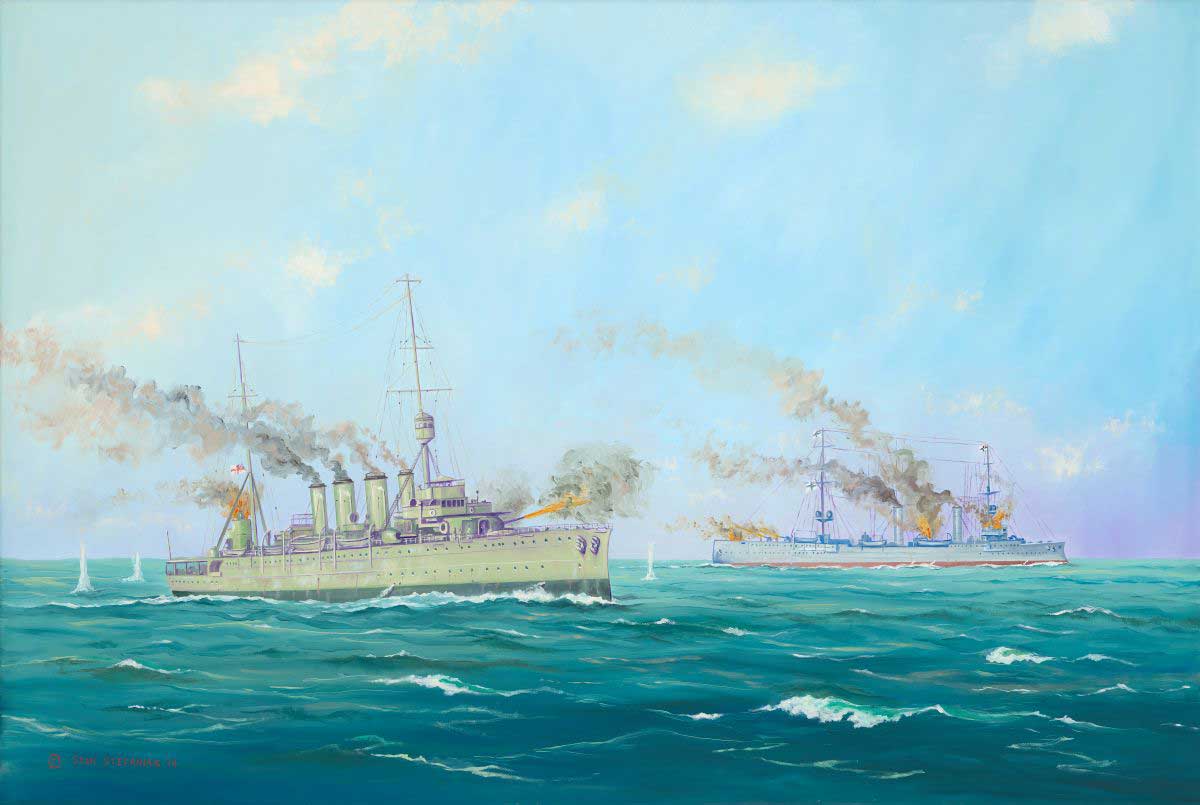
HMAS Sydney (I) and SMS Emden Engaged in Battle
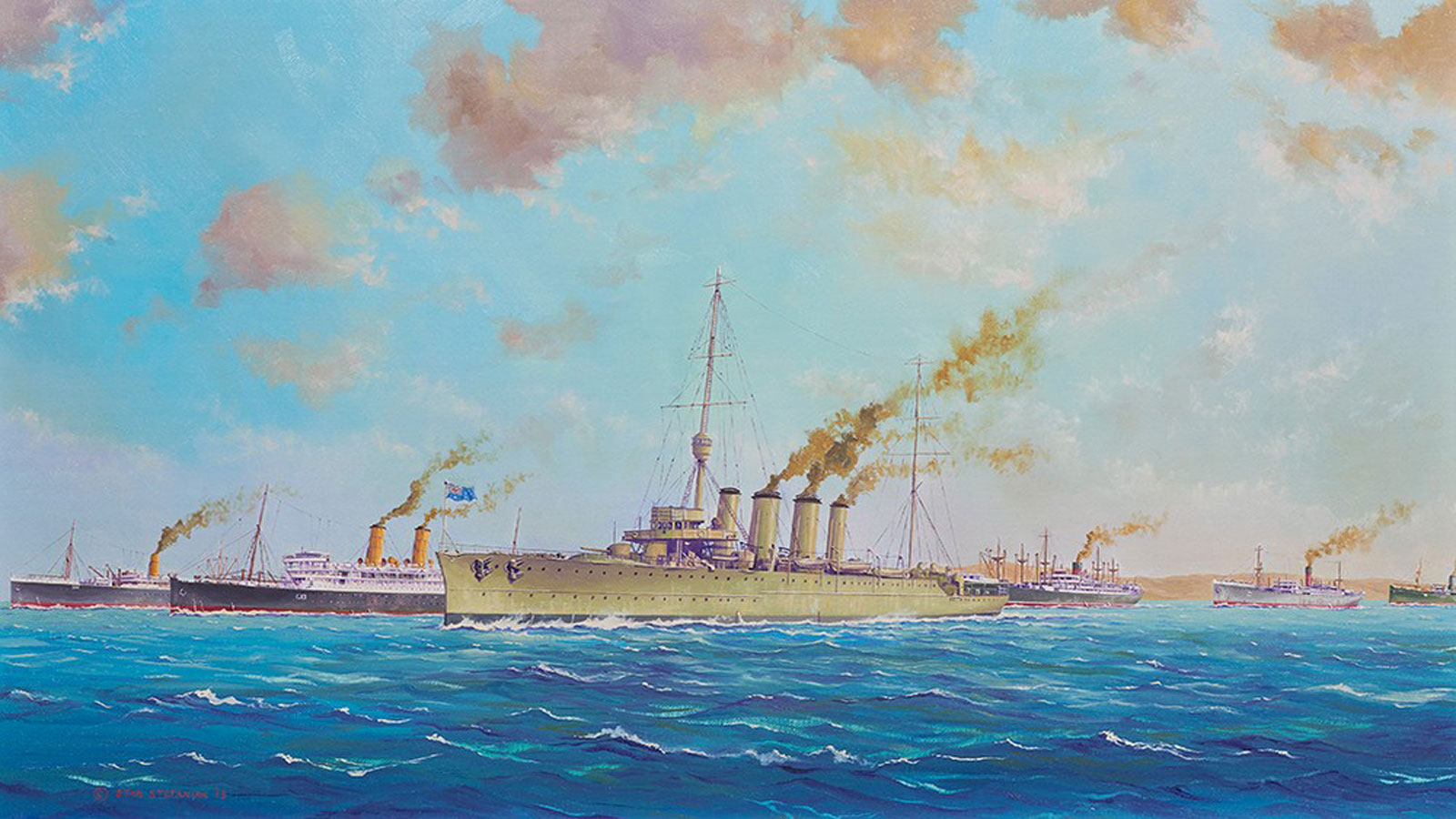
HMAS Sydney departing Albany in Escort of Convoy on 1 November 1914
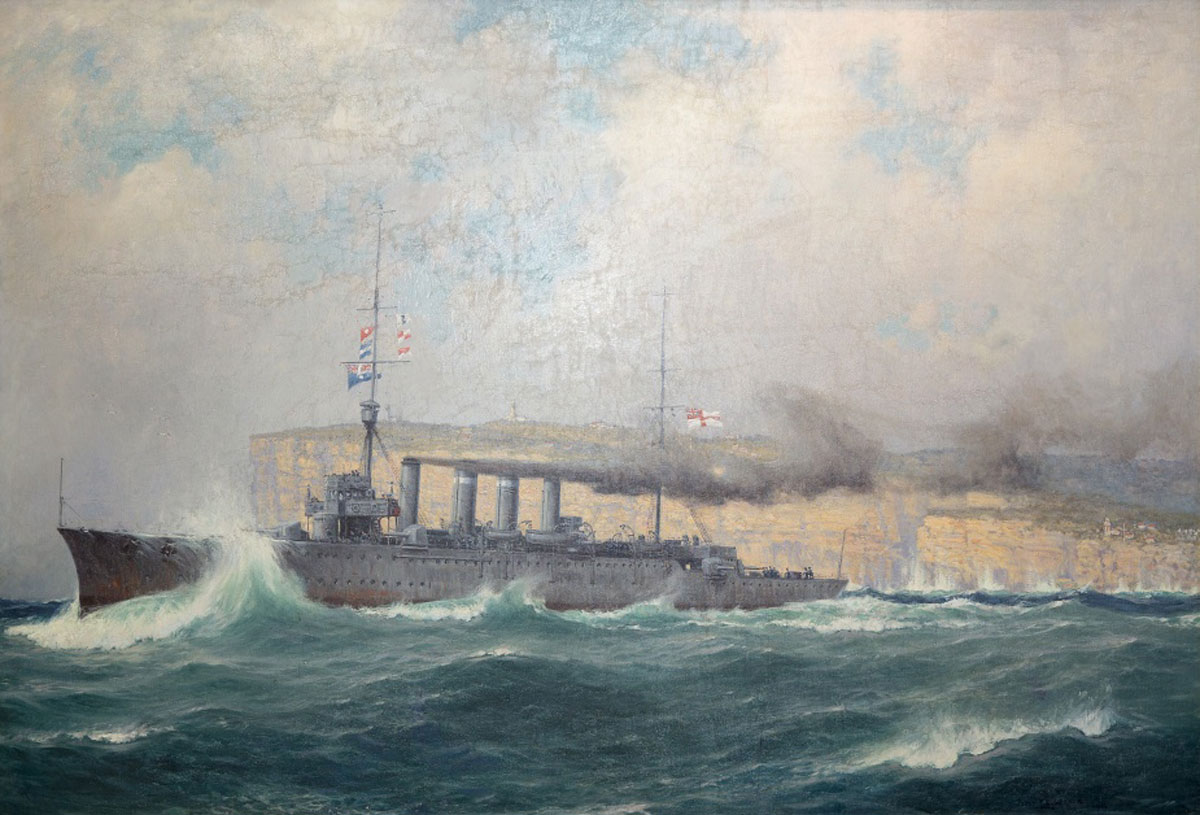
HMAS Sydney Leaving Sydney
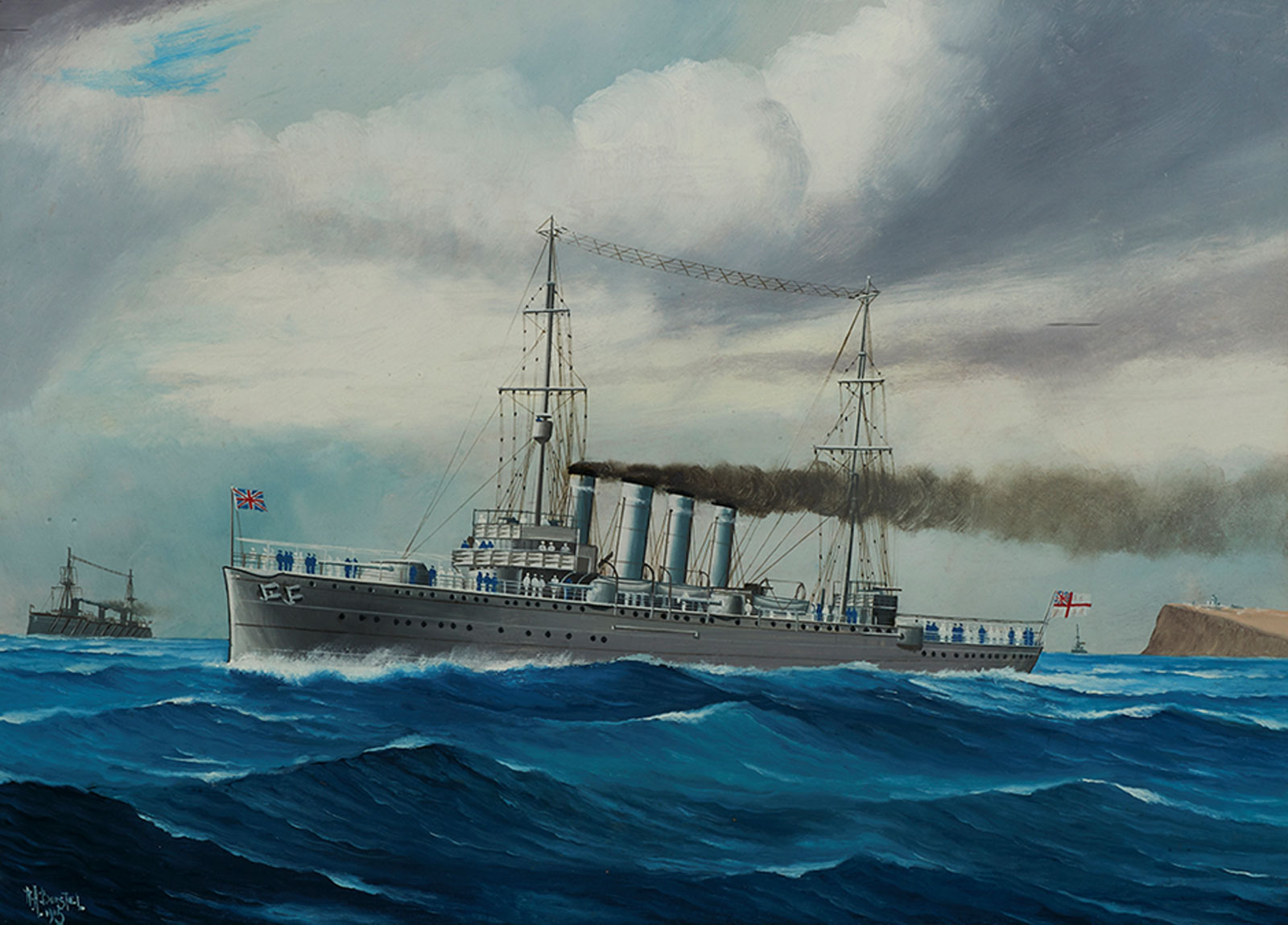
HMAS Sydney 1915

The Sinking of the German Cruiser Emden by HMAS Sydney 9th Nov 1914
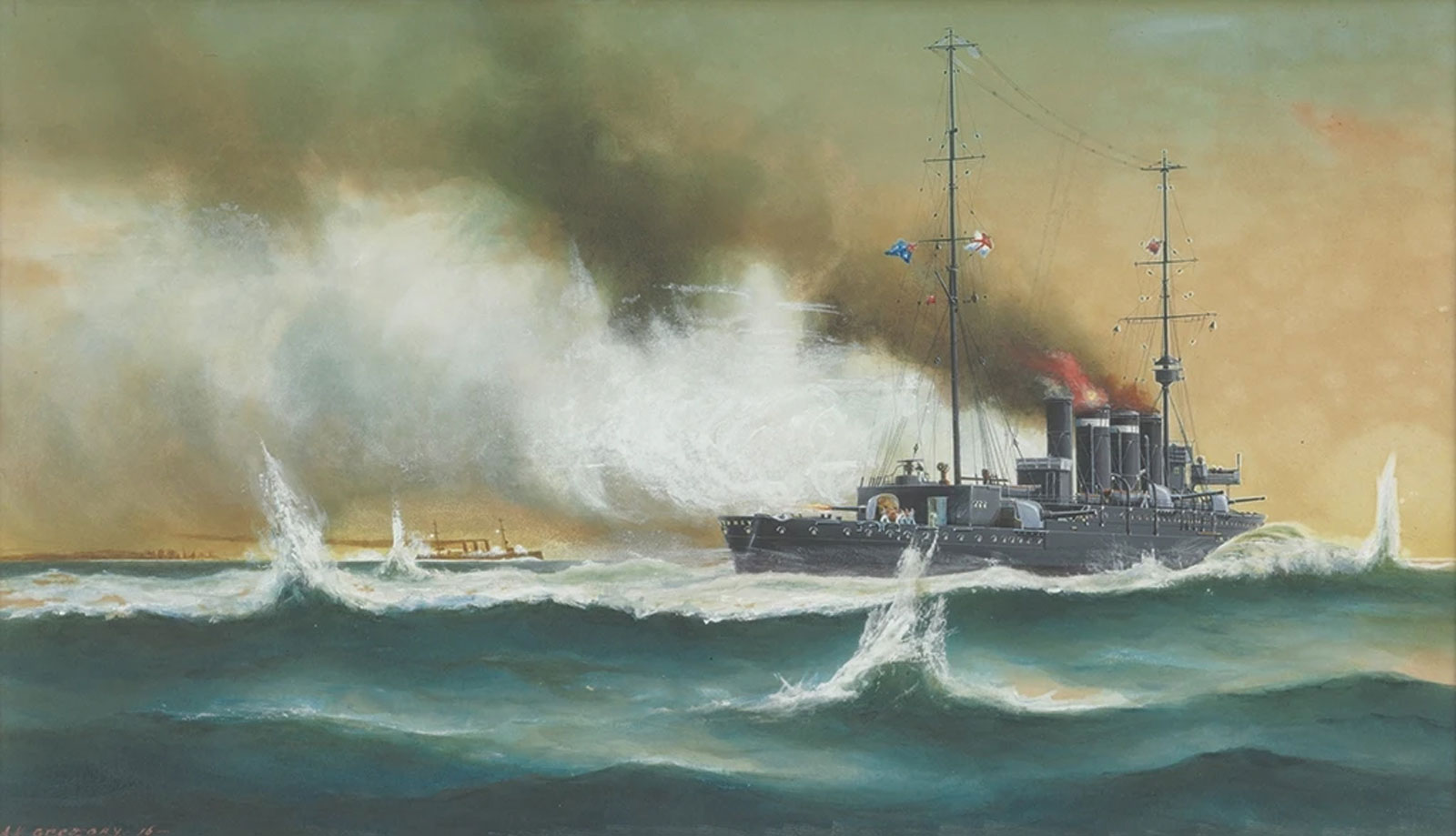
HMAS Sydney Engaging the German Cruiser SMS Emden, Off Cocos Island, Indian Ocean
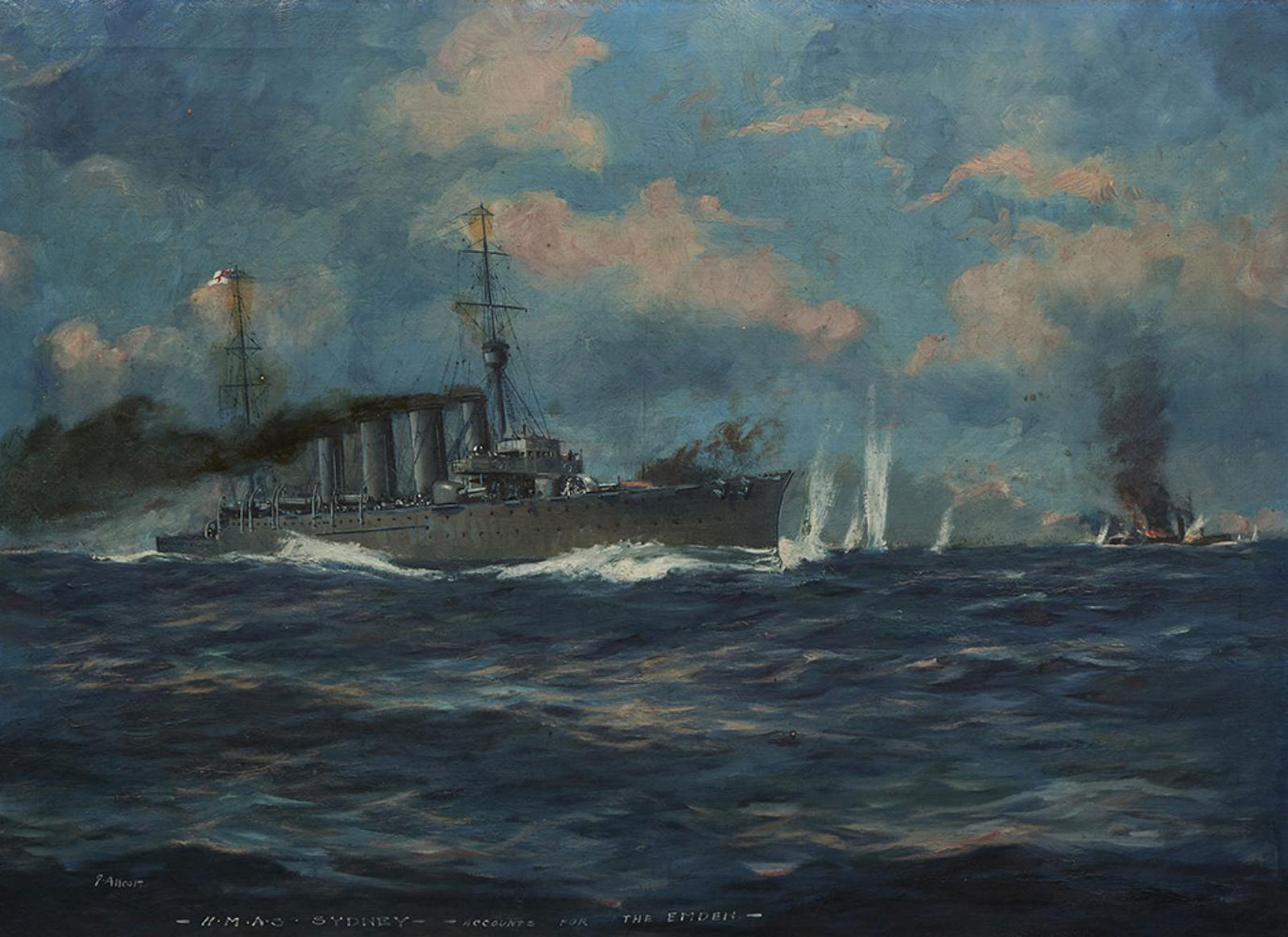
HMAS Sydney Accounts for the Emden

HMAS Sydney fighting the SMS Emden
